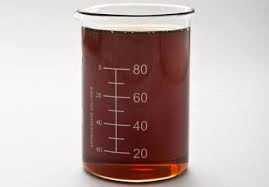Appearance
Yellowish Oily Liquid
Common Names
Fish Oil
Packaging
25 kg/190 kg lined tighthead steel drum
Brief Overview
Fish oil is extracted from fish tissue into fat or oil. Tunas, anchovies, mackerels are usually the origin of the fish oil since they are oily fishes. Oily fishes extracted as the fish oil source are used such as tunas, anchovies, and mackerel. Eicosapentaenoic acid (EPA) and docosahexaenoic acid (DHA) are the main omega-3 in fish oil which are used to enhance the animal’s feed for years. Besides omega-3, fish oil also contains vitamin A, vitamin D, and growth-promoting substances.
Manufacturing Process
Phospholipid-deprived fish oil is obtained by mixing fish oil with water and a monosodium glutamate (MSG) by-product with stirring, fermenting the mixture in the presence of urea, processing the mixture with steam, and centrifuging the mixture to separate water and phospholipides from the fish oil. Further steps are neutralizing the separated fish oil with NaOH, washing and drying the washed fish oil in vacuum; mixing the dehydrated fish oil with powders of earthworm excrement, subjecting the mixture to reaction at least 30 °C or higher for 0.5-1 hour, bleaching the fish oil absorbed into the earthworm excrement powders by use of activated clay, and filtering the bleached fish oil through a filter, and deodorizing the bleached and filtered fish oil under a steam atmosphere in a high vacuum, deodorizing apparatus, cooling and filtering the fish oil and packaging it into a closed vessel. The refined fish oil is significantly improved in acid value and peroxide value.
Animal Feed Industry
The product is used as feed additive / Premix raw material and supplement. It support growth, heart health, promotes silky coat, reduces itchy and flaky skin in allergy pets. Moreover, it provides polyunsaturated fatty acid (EPA/DHA) for animals.
